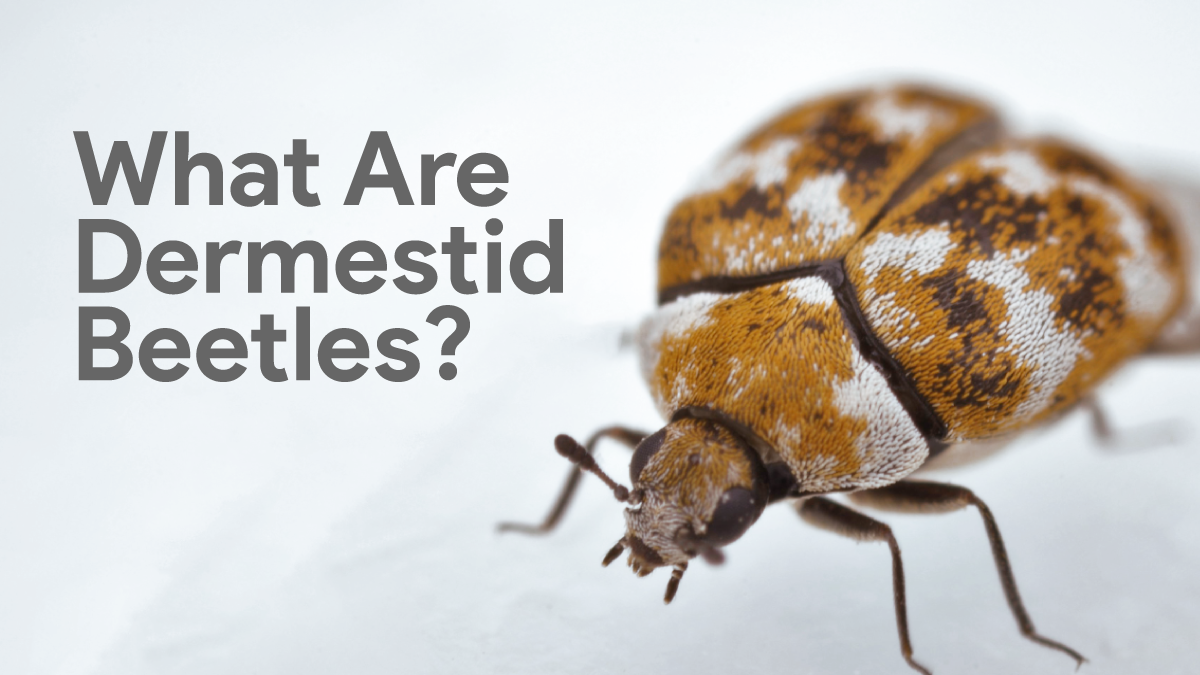The ubiquitous dermestid beetle (family Dermestidae) has had a long-established association with the presence of fur in houses and an endless supply of food.
Adults are typically brown or black. Though the intricate patterning on their exoskeletons can often be an identifying feature, many species exhibit varying degrees of complexity.
However, some are brightly coloured or patterned and covered with either hair or scales that easily rub off. We will discuss what are dermestid beetles, their types, characteristics and habitat.
What are dermestid beetles?
Dermestid beetles are a type of Beetle that belongs to the family Dermestidae. We commonly know them as “skin beetles” because they feed on animals’ dried and decaying skin, hair, and feathers.
We also know them for their ability to clean bones, making them useful for various applications, including taxidermy, natural history museums, and forensic science.
Types of dermestid beetles?
There are many species of dermestid beetles found throughout the world, with some of the more commonly known species including:
- Black Carpet Beetle (Attagenus unicolour): This species is widely distributed worldwide and feeds on animal skins, feathers, and stored food products.
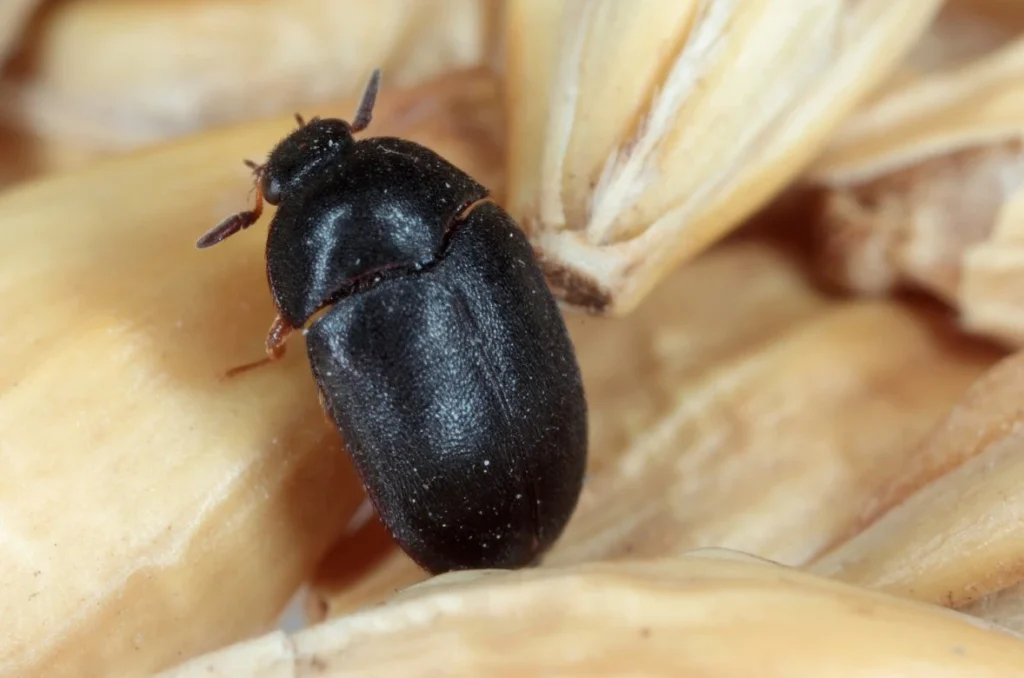
- Variegated Carpet Beetle (Anthrenus verbasci): This species is found in temperate regions and is known for its distinctive black-and-white pattern. It feeds on various plant and animal products and is often a pest in homes and other buildings.
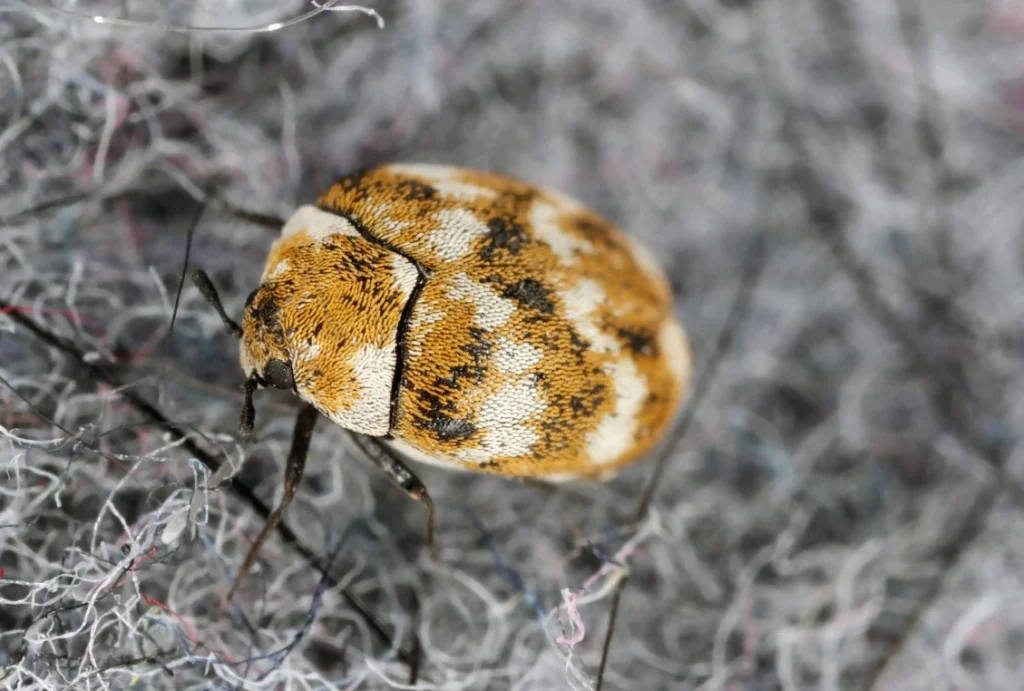
- Museum Beetle (Anthrenus Museorum): They spread worldwide and can damage stored animal skins, feathers, and other organic materials.
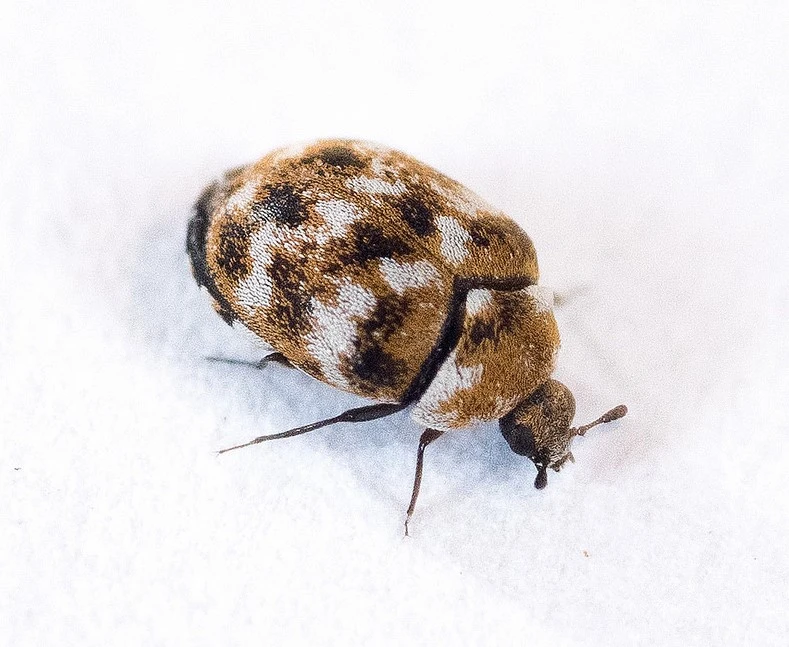
- Fur Beetles (Attagenus Pellio): This species eats furs and other animal products in temperate regions.
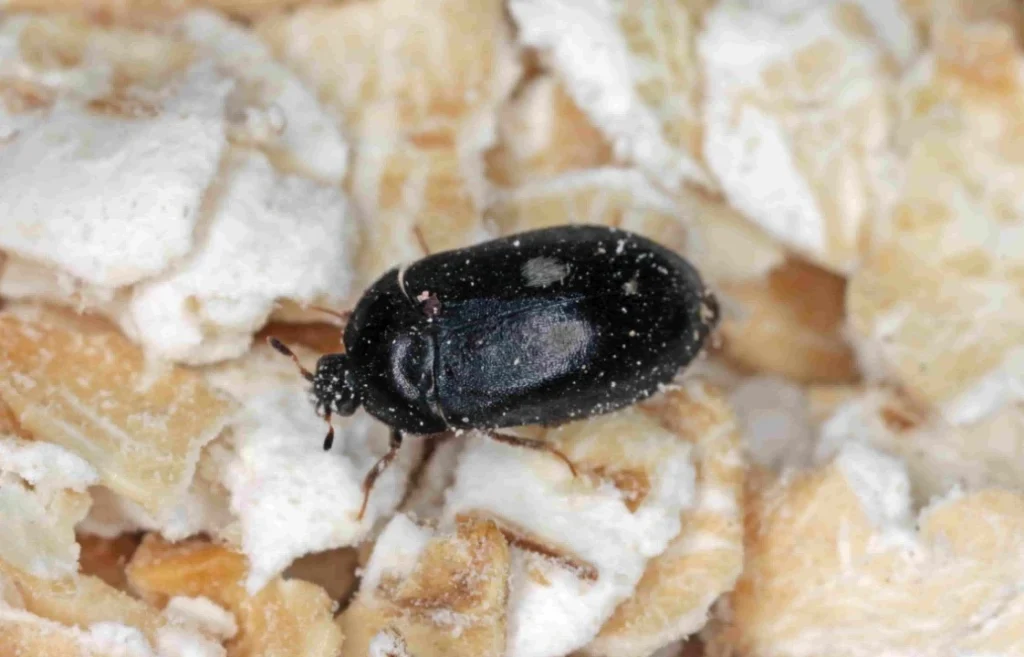
- Larder Beetle (Dermestes Lardarius): we see this species worldwide, and it is a common pest in stored food products, especially meat and cheese.
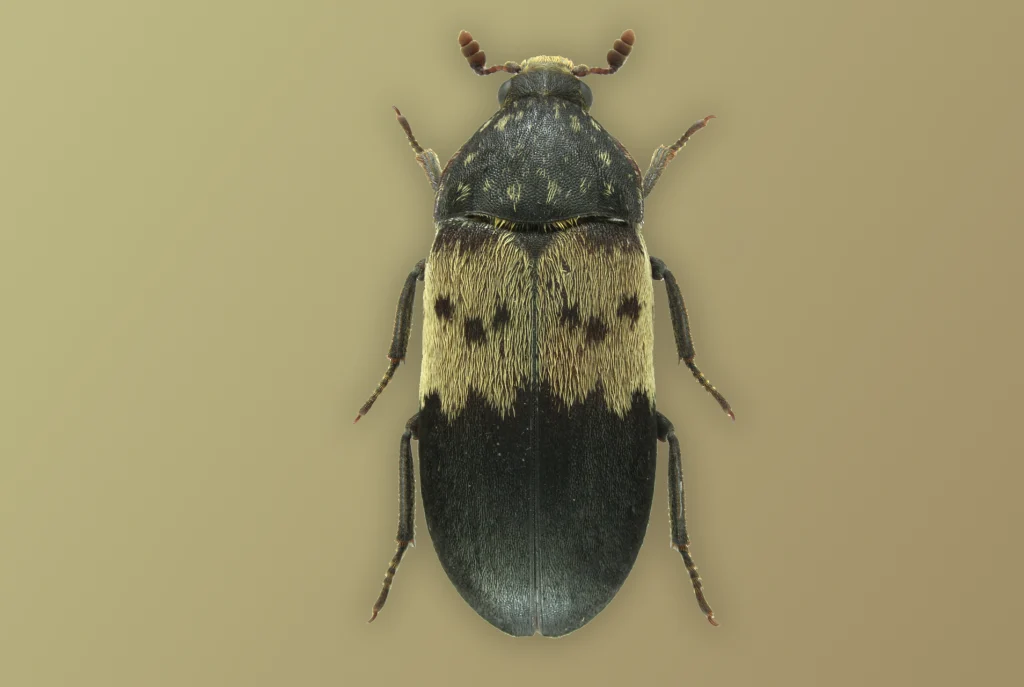
Characteristics of dermestid beetle?
Dermestid beetles have several characteristic features that distinguish them from other types of beetles:
- Body shape: Dermestid beetles have a cylindrical, oblong body covered in scales or hair. They are typically between 2 and 10 mm and have a distinctive brown-to-black colouration.
- Antennae: Dermestid beetles have long, serrated antennae that are used to sense their surroundings. The antennae are often longer in males than in females.
- Mouthparts: Dermestid beetles have strong mandibles, which they use to feed on organic materials, including plant and animal products.
- Legs: Dermestid beetles have six legs, which are used for movement and holding onto surfaces. We equipped them with tiny hooks and claws, which help them climb and cling to surfaces.
Lifecycle of Dermestid beetles?
The lifecycle of dermestid beetles comprises four stages: egg, larva, pupa, and adult. The time that each stage lasts can vary depending on the species and environmental conditions.
- Egg: Female dermestid beetles lay their eggs in or near a suitable food source, such as dead plant or animal matter. The eggs are small, white or yellow, and oval-shaped.
- Larva: After hatching, the larvae feed on the surrounding food source, moulting several times as they grow. The larvae are grub-like in appearance and covered in short, dense hairs. They got strong mandibles that they use to feed on their food source.
- Pupa: When the larvae grow, they spin a cocoon and pupate. During the pupal stage, the larvae undergo metamorphosis and transform into adult beetles.
- Adult: After emerging from the pupal stage, the adult beetles mate and lay eggs to start the cycle over again. Adult dermestid beetles feed on nectar, pollen, and other plant matter. Still, their primary role is to reproduce and lay eggs.
The entire lifecycle of dermestid beetles can take several weeks to months, depending on the species and environmental conditions. Some species of dermestid beetle can have multiple generations a year, while others may only have one generation per year.
Where do dermestid beetles live?
We can find them in forests, fields, and other outdoor environments where they feed on dead plant and animal matter.
We also considered some dermestid beetle pests because they can damage stored food products and woollen goods.
We can find dermestid beetles in various habitats worldwide, including forests, fields, and even homes.
Dermestid beetles size?
The size of dermestid beetles varies depending on the species, but they typically range from 2 to 8 millimetres.
How long do dermestid beetles live?
The lifespan of dermestid beetles varies depending on the species, but they have a relatively brief life span.
Dermestid beetle adult stages last several weeks to several months, while larval stages last months to a year or more.
Some species of dermestid beetle can have multiple generations a year, while others may only have one generation per year.
Environmental factors such as temperature, humidity, and food availability can also influence the time that dermestid beetles live.
In captive breeding situations, dermestid beetles can live for several years if provided with optimal living conditions.
Are dermestid beetles harmful to humans?
Dermestid beetles are not harmful to humans because they do not carry or transmit diseases and do not bite or sting.
However, they can cause damage to natural fibres, such as wool, silk, and feathers, as well as stored food products.
This damage can cause significant economic losses for farmers, museums, and other organizations that rely on these materials.
In addition, some people may have an allergic reaction to dermestid beetles or their droppings, which can cause skin irritation, itching, or redness.
Dermestid beetles are not harmful to humans but can be considered a nuisance because of the damage they can cause to materials and goods.
Can dermestid beetles fly?
Yes, some species of dermestid beetles can fly. The ability to fly varies among species, but many adult dermestid beetles have functional wings and can fly.
However, some dermestid beetles are flightless because they have reduced or non-functional wings.
The ability to fly can be important for dermestid beetles in several ways. Flying allows adult beetles to disperse to new habitats and find food, mates, and suitable places to lay their eggs.
In addition, the flight can help dermestid beetles escape from predators or adverse environmental conditions.
What do dermestid beetles eat?
Dermestid beetles feed on various organic materials, including plant and animal matter. Some dermestid beetles are scavengers and feed on dead insects and other animals.
Can dermestid beetles eat through plastic?
Dermestid beetles can chew through soft plastic materials, but they may have difficulty penetrating more rigid plastics.
Can dermestid beetles climb?
Dermestid beetles can climb, but their ability varies depending on the species and surface.
Are dermestid beetles harmful to humans?
Dermestid beetles are not typically harmful to humans. Still, they can be a nuisance if they infest a home or cause damage to stored clothing or food items.
Final Words
Dermestid beetles destroy plants and animals and recycle nutrients into the soil as part of the ecosystem.
However, they can also cause damage to stored food products and natural fibres, making them considered pests in some situations. The lifespan of dermestid beetles varies depending on the species.
If you spot the dermestid beetle, try to be gentle because now you know what are dermestid beetles and how to handle it.
Related Articles
What Is A Soldier Beetle? Tiny Nature-Friendly Pollinators
What Is A Rove Beetle? Complete Guide About Rove Beetles
